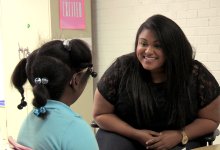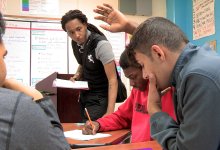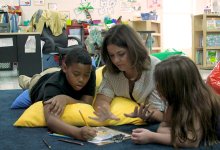How a District Integrates SEL With Academics
A look at how Nashville implements social, emotional, and academic development across every grade level.
Your content has been saved!
Go to My Saved Content.By 2011, the Nashville school district faced a moment of reckoning. The city’s reputation as an affordable cultural capital of the New South was drawing newcomers from the U.S. coasts, while immigration from Central America, Africa, and the Middle East was adding a new, international element. Amid the dizzying pace of change, there were persistent reminders of Nashville’s past: poverty, racial and class-based inequities, and trauma—chronic issues affecting virtually all large U.S. cities.
Inside the city’s 168 schools, both the new realities and the old, enduring problems were apparent to the new superintendent, Dr. Shawn Joseph. Over 120 languages were spoken by the roughly 88,000 students, 70 percent of the pupils were considered economically disadvantaged, and academic performance in areas like literacy was poor. Meanwhile, Nashville was not immune to the broader trends reshaping the American workforce, including the growing demand for workers accustomed to collaboration, critical thinking, and advanced problem solving.
“Our vision is to be the fastest-improving district in the nation. To do that, we need to focus on academic key performance indicators and culture and climate,” said Joseph. “We clearly recognize that if students aren’t engaged and feel safe, if they don’t know how to work through challenges, they’ll never maximize their potential.”
But how do you meet the academic and social and emotional needs of such a diverse population: newly arrived Kurdish immigrants, children of trauma or poverty, low- and high-performing kids of all ages and from all walks of life? How do you level the playing field? It’s a quintessentially American question.
In Nashville, the answer has been an investment in an ambitious program that integrates social and emotional learning with academic development, now in the sixth year of an extended rollout. We trace the arc of the program’s progress below. In our feature article, “Nashville Confronts SEL Resistance Head-On,” writer and longtime Nashville resident Holly Korbey looks at the complex set of factors that led to the formation of the district’s SEL program, the research that supports its positive impact on academics, and the hurdles the program faced in its inaugural years. And our video team explores the innovative SEL practices at three schools—Fall-Hamilton Elementary, Valor Collegiate Academies, and Pearl-Cohn Entertainment Magnet High School—a trio that represents a broad cross-section of Nashville and reflects the city’s changing demographics.
These stories and videos were produced by Edutopia as part of a series developed in collaboration with the National Commission for Social, Emotional, and Academic Development, with support from the Chan Zuckerberg Initiative.





